Due to the increasing populations of seagulls in North America, there are a lot of reported bird-human conflicts and property damage. This is why getting rid of these pesky birds is important.
So, how to get rid of seagulls? Use bird spikes or netting, install deterrents, maintain cleanliness, trim or prune vegetation, prevent them from entering your property, and eliminate food sources.
If you want to know more about seagulls, how to properly identify and distinguish different species, getting rid of them, and preventing them from coming back, this article has got it all for you! Read further for more!
What Is a Seagull?

Scientifically, seagull is a layperson’s term that refers to birds belonging in the Laridae family which consists of gulls and terns. Since they are usually found near open water habitats, they earned the name seagulls.
Most seagulls are scavengers and can be spotted foraging coastlines and beaches for dead animals.
Seagulls can be heard emitting shrill, screeching, or high-pitched squealing calls. They are generally known to be territorial, especially during nesting season.
Types of Seagulls
Generally, seagulls are similar in appearance and are not far apart in size. They also don’t reach their adult plumage until their 4th or 5th year.
Here are the three main species of seagulls:
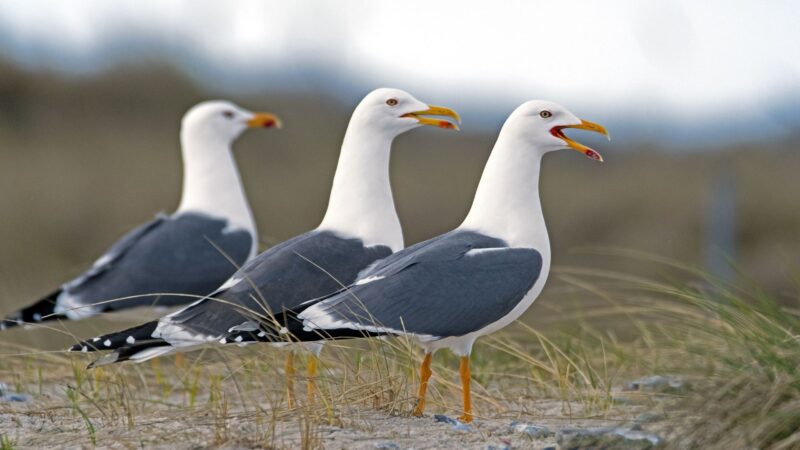
Herring Gull
This species is the most common and familiar seagull found across North America and the Northern Atlantic. They are usually spotted foraging on coastal shorelines and beaches.
- Scientific Name: Larus argentatus
- Appearance: Relatively large gulls white white heads and underparts, light gray backs, yellow beaks with one red spot, black-tipped wings, and pink legs.
- Lifespan: Up to 31 years (in the wild)
- Size: 56 to 66 cm; 800 g to 1.25 kg
- Wingspan: 137 to 146 cm
- Characteristics: Social birds as they are colony nesters. They are active during the day, territorial, and migratory.
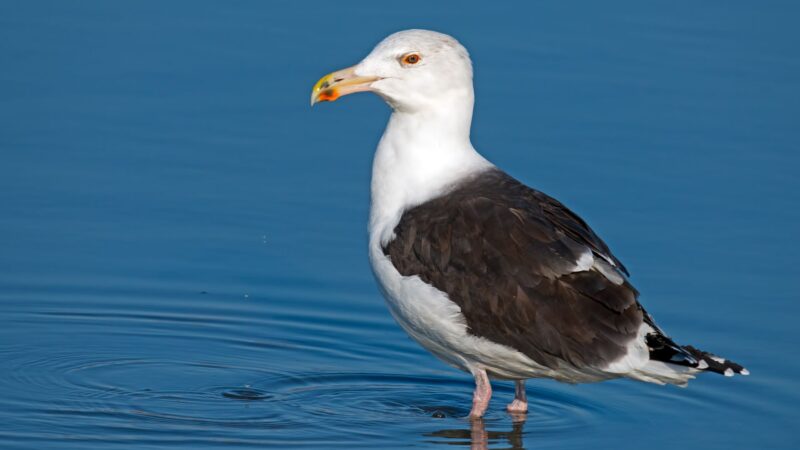
Great Black-backed Gull
Largest among all species, populations of this bird used to be drastically low due to feather trade. Fortunately, they have stabilized in the 20th century and are now a common sight in the East Coast.
- Scientific Name: Larus marinus
- Appearance: Stout-bodied gull with white overall plumage, slate black backs and upper wings, flesh-colored legs, and yellow beaks with a red spot.
- Lifespan: Up to 23 years (in the wild)
- Size: 64 to 79 cm; 750 g to 2.3 kg
- Wingspan: 146 to 160 cm
- Characteristics: Solitary gulls but may occasionally be found in small groups spaced far apart. Like other species, they are also migratory, territorial, and diurnal.
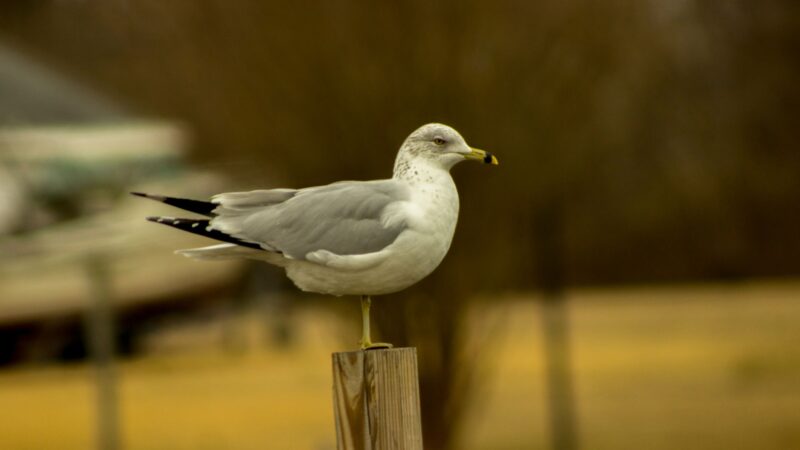
Ring-billed Gull
Contrary to other species, Ring-billed Gulls are usually found far away from coastal areas. They are also the most distinguishable in terms of appearance due to their black-ringed bill, hence the name.
- Scientific Name: Larus delawarensis
- Appearance: Medium-sized gulls characterized by pale bluish-gray backs and shoulders, white heads and bellies, black-tipped and white-spotted wings, yellow or green legs, and a distinctive black band around its beak.
- Lifespan: Up to 23 years (in the wild)
- Size: 43 to 54 cm; 300 to 700 g
- Wingspan: 105 to 117 cm
- Characteristics: Highly social birds especially during the breeding season. They are also territorial, migratory, and diurnal.
Are Seagulls Protected?
Yes. Seagulls, their nests, and their young are protected by federal laws and regulations. It is legally prohibited to harm them, especially during nesting season.
Why Seagulls Choose to Nest on Your Property?
The following reasons explain why seagulls, although they primarily live near open water habitats, choose to invade your property:
- Abundance of food sources: Seagulls are opportunistic feeders and consume a variety of food items, including trash. Chances of these birds nesting on human properties increase if they are near food sources.
- Potential nesting sites: Trees, rooftops, ledges, and other man-made structures provide suitable nesting spots for the birds.
- Flat-surfaced areas: Seagulls tend to nest on areas that are flat such as roofs with a little substrate.
Related: How to Prevent Birds Nesting in Roof? | Information and Control Guide
Why Is Seagull Prevention Important?
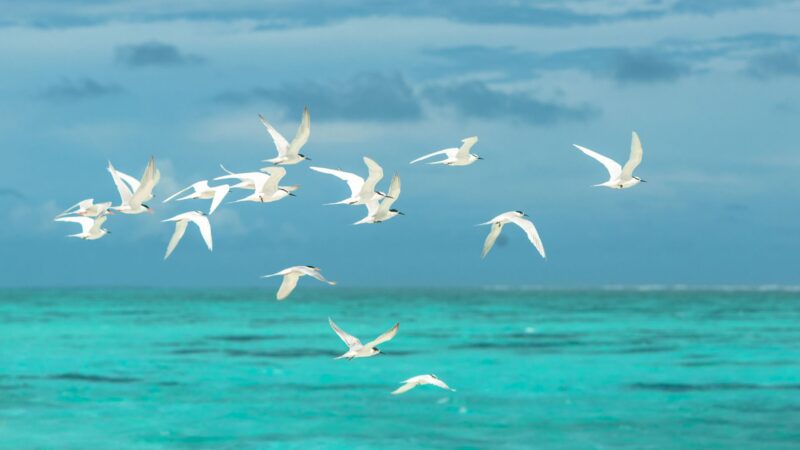
Preventing seagulls from nesting on your property is essential because:
- Property damage: These birds loudly peck on house structures such as roofs, sidings, gutters, chimneys, and even windows. This can potentially damage these areas.
- Noise pollution: Seagulls produce a lot of noise, which is mainly a defense mechanism against potential predators. This may become a huge disturbance.
- Health hazard: Fecal droppings may contain bacteria which, in turn, can contaminate water near your property. Seagulls are known carriers of E. coli and Salmonella. Additionally, their nests may house mites which can cause irritation.
How to Get Rid of Seagulls on the Roof?
There are many instances of seagulls feeling at home on rooftops. Here are some ways you can deter them:
- Place bird spikes on areas where they frequent or potentially land and perch. The standard size would do since they are fairly large birds.
- Install visual deterrents such as fake predators, reflective tape or flags, eyespot balloons, and other suitable products.
- Observe cleanliness at all times. Dispose of any spilled or wasted food and water items. This includes fallen fruit, excess bird seed, or pet food.
- Contact a local professional wildlife officer to discuss more comprehensive measures.
Related: How to Get Rid of Robins? | 8 Effective, Natural, and Humane Solutions
How to Get Rid of Seagulls on Boats?
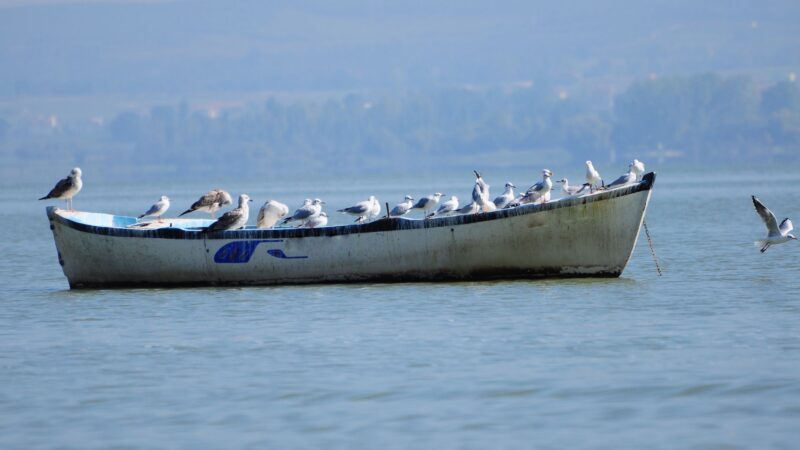
Seagulls are a more frequent sight on boats and other water vehicles than you think. To keep them away, try your luck with these strategies:
- Install a boat cover, netting, or overhead wires to protect your vehicle.
- Accompany the above mentioned strategy with bird spikes placed around the boat. Make sure they are properly tied to the boat to prevent them from falling.
- Strategically place a combination of visual and auditory repellents around the vehicle, if logistics permit.
- Maintain cleanliness and orderliness of your boat. They may have found some food items they want to consume.
Related: How to Get Rid of Purple Martins | 6 Tips for Successful Bird Control!
How to Stop Seagulls From Nesting?
To prevent seagulls from nesting on your property, perform the following methods:
- Use bird spikes, wire mesh netting, and other exclusionary barriers to prevent entry to potential nesting sites.
- Observe and maintain cleanliness around your property. Properly dispose of trash and eliminate food sources that may attract the gulls.
- Trim or prune trees, shrubbery, and other vegetation that may be used as potential nesting areas.
- Install visual and auditory deterrents. But make sure that you relocate them every now and then to maintain their effectiveness.
- Contact your local wildlife expert for more information and help regarding effective, nonlethal seagull preventive measures.
Related: How to Keep Birds From Nesting on Porch? | The Effective Guide
How Do You Stop Seagulls From Attacking You?

Seagulls are aggressively protective of their nests. They not only injure birds and predators, but they also harm humans if they get too close.
To protect yourself from getting pecked at by seagulls, here are some tips:
- Keep yourself far away from known nesting locations. Do not approach the birds or disturb them in any way.
- Avoid feeding the birds as this acclimates them towards human presence, unintentionally increasing the chances of you being attacked.
- To protect yourself from sudden, swooping seagulls, wear a protective hat or use an umbrella.
- Don’t panic once you come face to face with a seagull. As much as possible, do not make any sudden movements or any noises that may startle them.
List of Sources
All About Birds. (n.d.). Herring Gull.
All About Birds. (n.d.). Great Black-backed Gull.
Dewey, T., & Pappas, J. (n.d.). Larus delawarensis: Ring-billed gull.
Environment and Climate Change Canada. (2021). Migratory Birds Convention Act, 1994.
- How to Get Rid of Copperheads | Practical Guide - August 27, 2023
- How to Get Rid of Corn Snakes | What Makes Them Aggressive? - August 27, 2023
- How to Get Rid of Alligators | Safety Measures and Removal Methods - July 16, 2023
